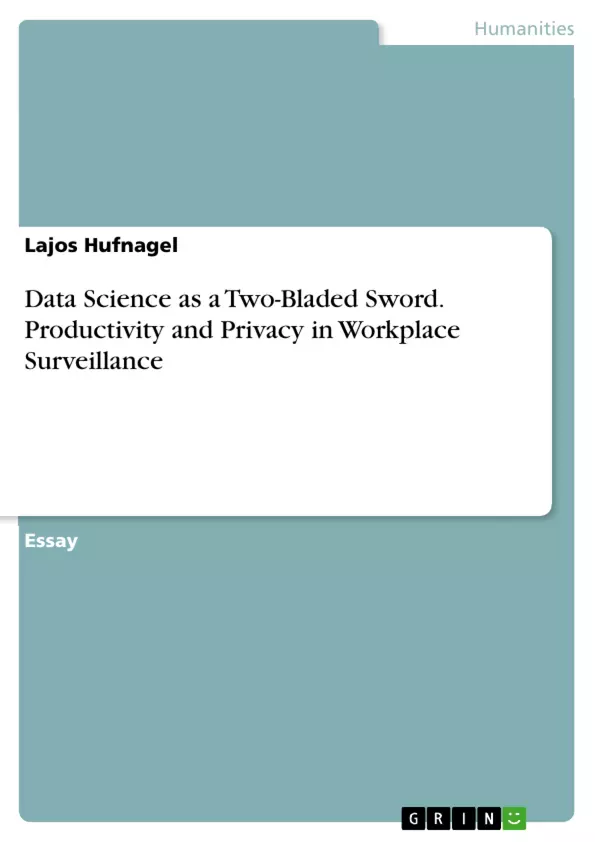The essay explores the impact of digital employee surveillance on productivity and privacy, highlighting its historical evolution and the ethical challenges posed by modern technologies like AI, IoT, and biometrics. While these technologies can optimize efficiency and ensure compliance, they risk violating privacy, diminishing trust, and increasing stress among workers. The essay argues that a balance is achievable through legal frameworks, ethical data practices, and transparent communication, ensuring productivity benefits while safeguarding employee rights.
Inhaltsverzeichnis (Table of Contents)
- Gender Disclaimer
- Index of Abbreviations
- Introduction
- Employee Surveillance - An Overview
- Definition and Historical Phases of Employee Surveillance
- Methods and Technologies Used in Digital Employee Surveillance
- Ethical Implications of Digital Employee Surveillance
- Arguments Against Digital Employee Surveillance
- Arguments in Favor of Digital Employee Surveillance
- Conclusion
- Outlook: Future Research Priorities
- References
Zielsetzung und Themenschwerpunkte (Objectives and Key Themes)
This essay examines the use of digital technologies for employee surveillance, focusing on the tension between increased productivity and potential privacy violations. It analyzes the ethical implications of such practices, exploring arguments for and against their implementation.
- Definition and historical context of employee surveillance.
- Methods and technologies used in modern digital employee surveillance.
- Ethical considerations and potential privacy infringements.
- Arguments supporting and opposing the use of employee surveillance technologies.
- The impact of employee surveillance on workplace culture and employee well-being.
Zusammenfassung der Kapitel (Chapter Summaries)
The Introduction presents the case of Amazon's 32 million euro fine from the CNIL for employee monitoring, highlighting the ongoing debate surrounding the legitimacy and ethical implications of workplace surveillance. It introduces the use of various technologies for monitoring employee activities, from scanners to smartphone apps, and the potential consequences for employees who don't meet performance targets. The overview section provides a definition and historical context of employee surveillance, setting the stage for a deeper investigation of contemporary practices.
- Quote paper
- Lajos Hufnagel (Author), 2024, Data Science as a Two-Bladed Sword. Productivity and Privacy in Workplace Surveillance, Munich, GRIN Verlag, https://www.hausarbeiten.de/document/1513264


